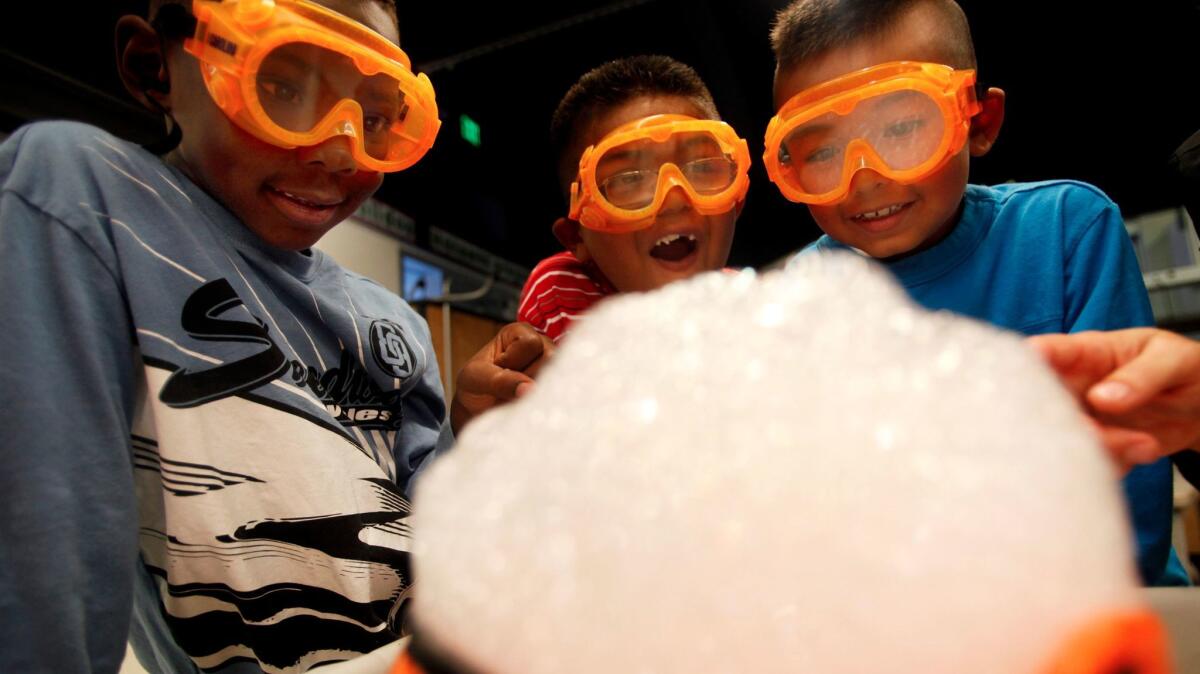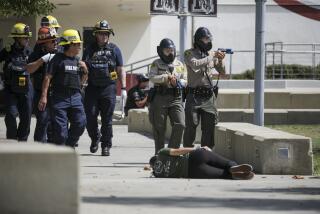Say goodbye to science class as you know it

In California, the guidelines for how to teach science are changing.
It should be hands-on, education officials now say, and its concepts should be connected to other subjects.
California is one of a number of states that in recent years adopted what are called Next Generation Science Standards — goals for each grade intended to make science more experiential, coherent and relevant.
State education staffers then gathered groups of science teachers and over 3,000 public comments about how to translate those goals into lessons.
On Thursday, the state education board approved a science “curriculum framework” that came out of that field research. While the standards state key principles and what students should know by the end of each grade, the framework, officials say, is the “how.”
The document is supposed to guide publishers to develop new textbooks for use in the state’s public schools.
“The aim is to prepare students graduating from high school to be critical consumers of information and capable problem-solvers,” the framework states in its introduction.
It calls for students regularly to engage in hands-on science or investigations — and not simply memorize information to regurgitate.
“In the old days, students were in the back, teachers sat in the front,” said Bryan Boyd, a former science teacher who consults on science programming for the state education department. The students, he said, “weren’t real scientists and couldn’t apply what they learned.”
Now, instead of teachers presenting diagrams or models, students should be led to come up with their own. One potential lesson guide asks kindergartners to brainstorm ways to save water or paper. The teacher can then tell them how their ideas relate to the key environmentalist concepts of “reduce, reuse and recycle.” Then students can draw the solutions they came up with and choose from those words to label them.
Teachers also should try to show students how science connects with other subjects, especially in elementary school, where one teacher oversees all areas.
To relate science to English/language arts, the framework suggests asking kindergartners to express ideas about plants and animals by using language such as “I think” and “I agree with” and then asking them to write down their thoughts.
In a discussion of how to teach science effectively, the framework suggests that connecting scientific concepts to art “can spark creativity for teachers and students alike.”
Over the course of a student’s schooling, the framework says, students’ understanding of science should grow in sophistication — from noticing “visible phenomena” in the early grades to understanding bigger systems later on in elementary school. In middle school, they should come to know the microscopic world. In high school, the subatomic.
Lessons build on one another. In kindergarten, students learn about what happens when objects are pushed or pulled. In third grade, they learn that these motions are forces and that they can interact in complex ways, as they can see on the playground when they kick balls, push swings or land after coming down slides.
After fifth grade, districts have different options for how they can order the science curriculum. They can maintain the separation of scientific disciplines or use an “integrated model” in which students learn about ideas from multiple disciplines at once. Long taught as clearly delineated separate courses, chemistry, earth science, biology and physics can be blended.
In an integrated middle school curriculum, sixth graders would learn about water, weather, climate change, cells, reproduction and heat. Seventh grade would cover rock cycles, plate tectonics, natural hazards, photosynthesis and atoms. In eighth grade, students would explore the universe, resource consumption, evolution, forces, energy and gravity.
This spring, the state will do a pilot run of new science tests connected to the standards. Next year, the tests will be administered officially, and students will receive their scores.
To read the article in Spanish, click here
You can reach Joy Resmovits on Twitter @Joy_Resmovits and by email at [email protected].
More to Read
Sign up for Essential California
The most important California stories and recommendations in your inbox every morning.
You may occasionally receive promotional content from the Los Angeles Times.











